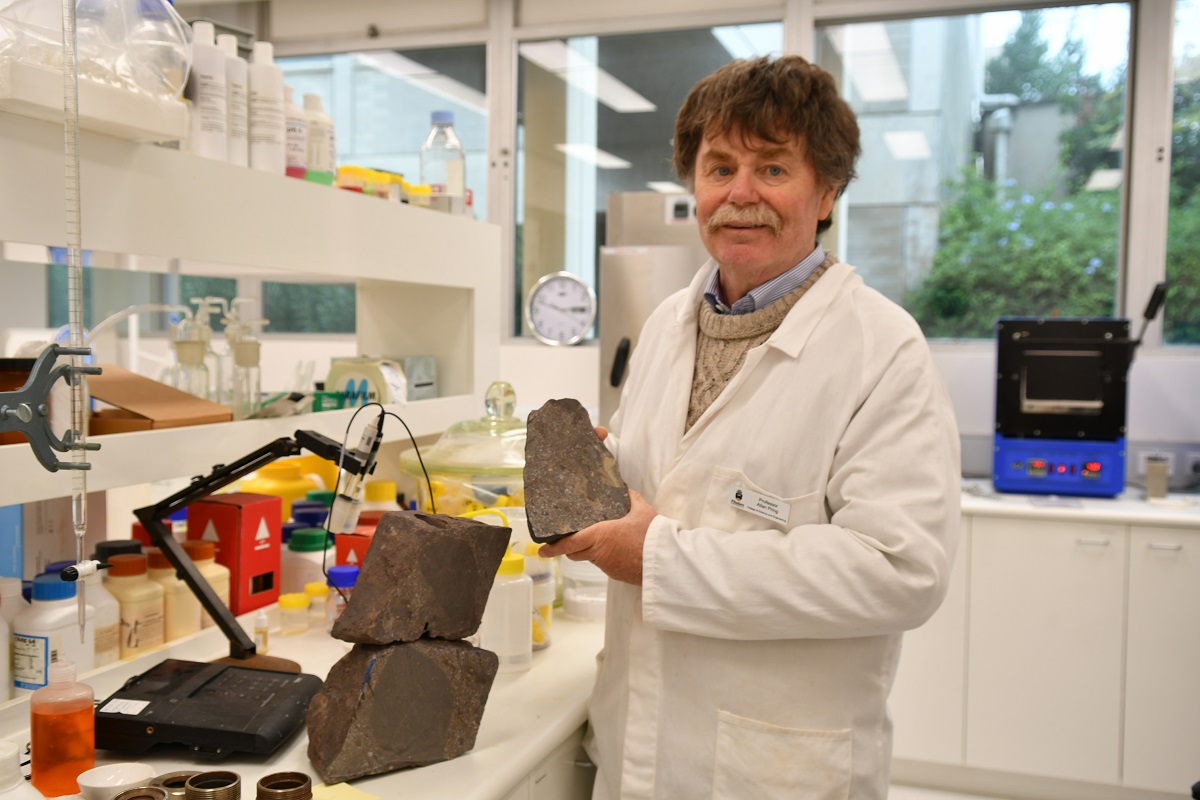
Iron, copper and gold uranium deposits are extremely valuable but extracting these minerals cheaply and reliably while leaving non-target metals behind is difficult to achieve in complex mine sites.
The Olympic Dam deposit is one of the great ore deposits of the world and mining companies are keen to find similar deposits. The ore body at Olympic Dam was originally formed some 1,590 million years ago and the nature of the deposit has evolved over geological time to be very complex with much of the copper and uranium ore migrating around the deposit effecting different generations of uranium.
Flinders University’s Professor of Chemical Mineralogy Dr Allan Pring and his team have won $385,000 in Australian Research Council Linkage Project grant funds for a study titled ‘Self-zoning in natural uraninite: radiation driven chemical separation’.
This project aims to utilise the unusual behaviour of uraninite, the principal uranium mineral in the Olympic Dam deposit, to follow the different geological and chemical processes that have occurred in the deposit over time.
Dr Allan Pring says the project will look at the effects of substituting lead and rare earths on the chemistry of the minerals involved and develop improved models for the exploration and discovery of large iron oxide, copper and gold reserves.
“In this project we aim to explore and define the effects of the substitution of lead and rare earths on the crystal chemistry of uranium dioxide (uraninite) and related minerals, towards establishing the oxygen stoichiometry of these materials both in nature and in synthetic materials,” says Dr Pring.
“This project will use synthetic materials to understand the variability of oxygen stoichiometry, establish accurate and precise structures for the oxides, and distinguish both long-range and short-range order which is critical to understanding both natural and synthetic uranium oxides.”
“This will help to define the geochemical conditions leading to the formation of deposits like Olympic Dam for potential future economic benefits.”
A significant innovation of this project is a detailed understanding of the chemical controls on the mechanism of uraninite oxidation and remobilisation.
The researchers will undertake a detailed study of the crystal chemistry of natural “old” uraninites from iron oxide-copper-gold deposits using a range of forms of chemical analyses, diffraction techniques and spectroscopic methods.
This project follows on from 2017 research at Flinders University led by Professor Pring into a new technique for extracting low-grade copper in an affordable and sustainable way to extend the life of mines.

